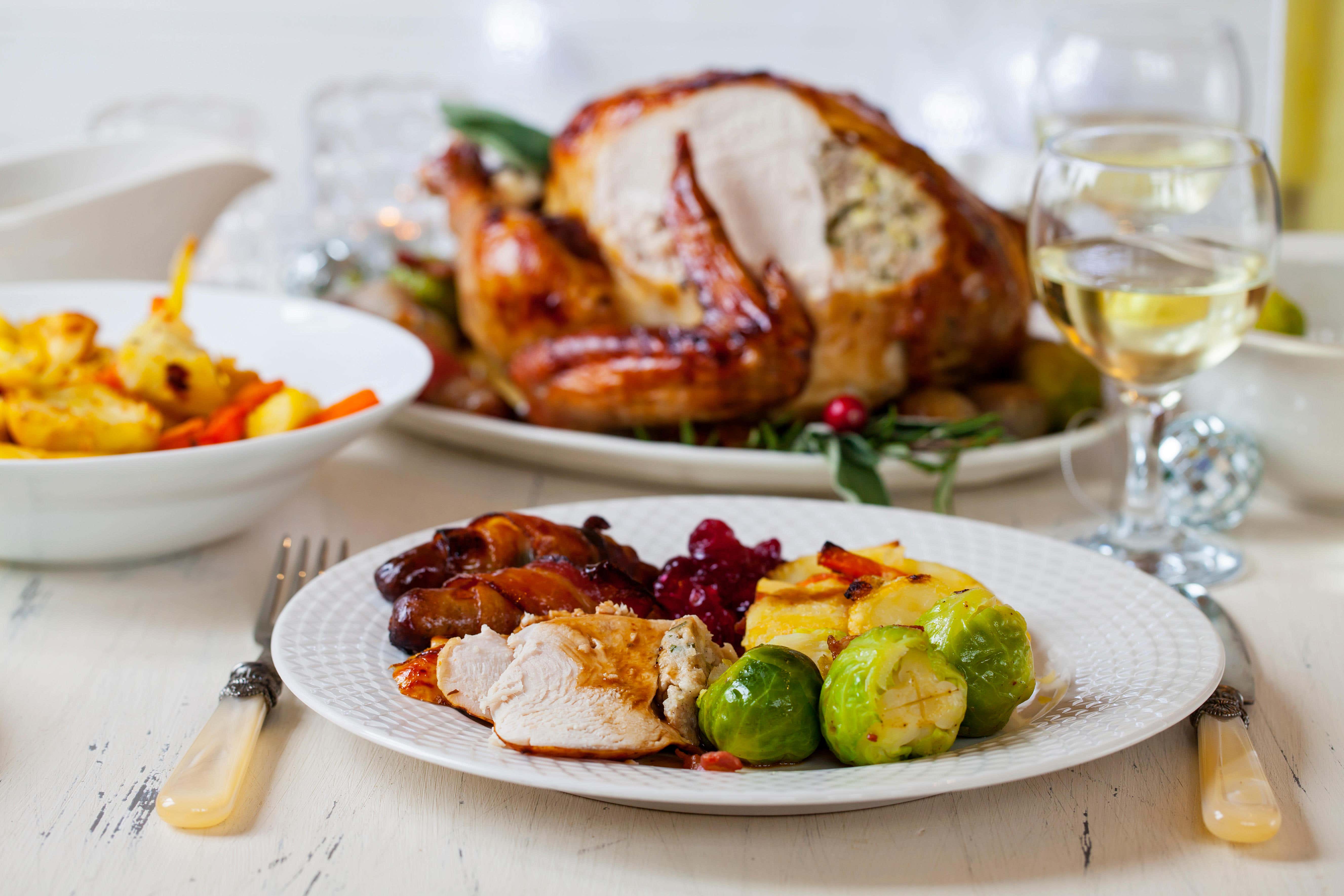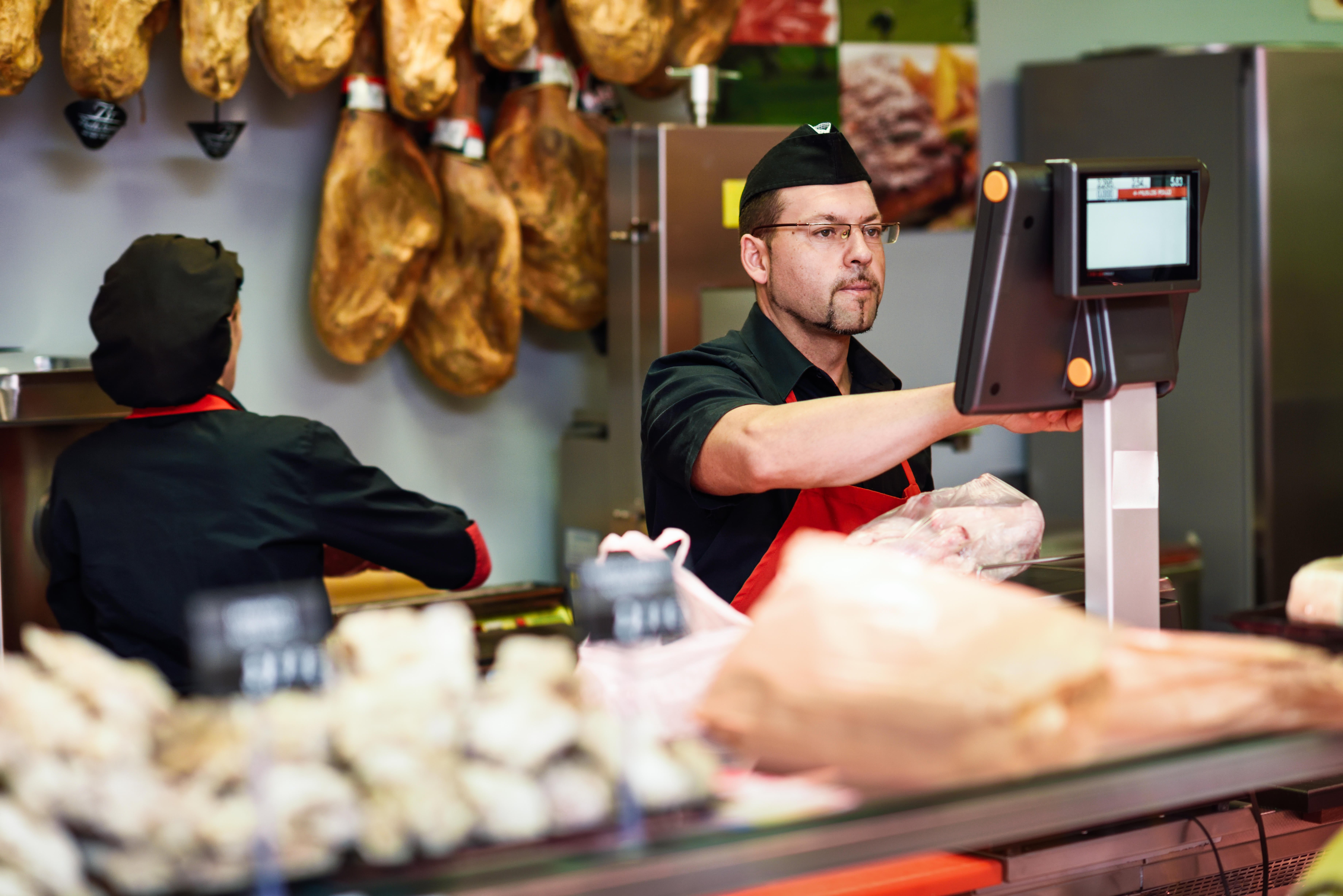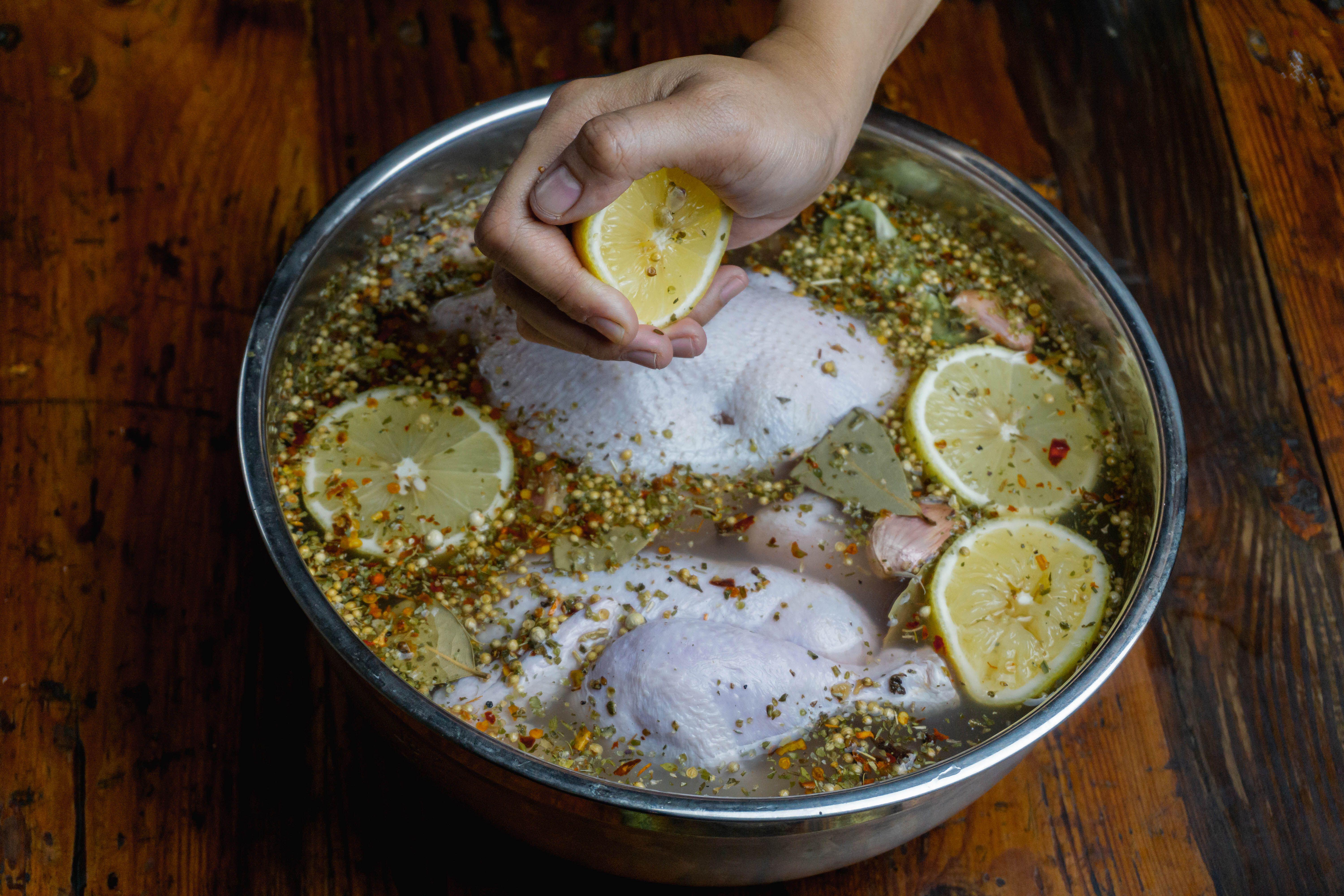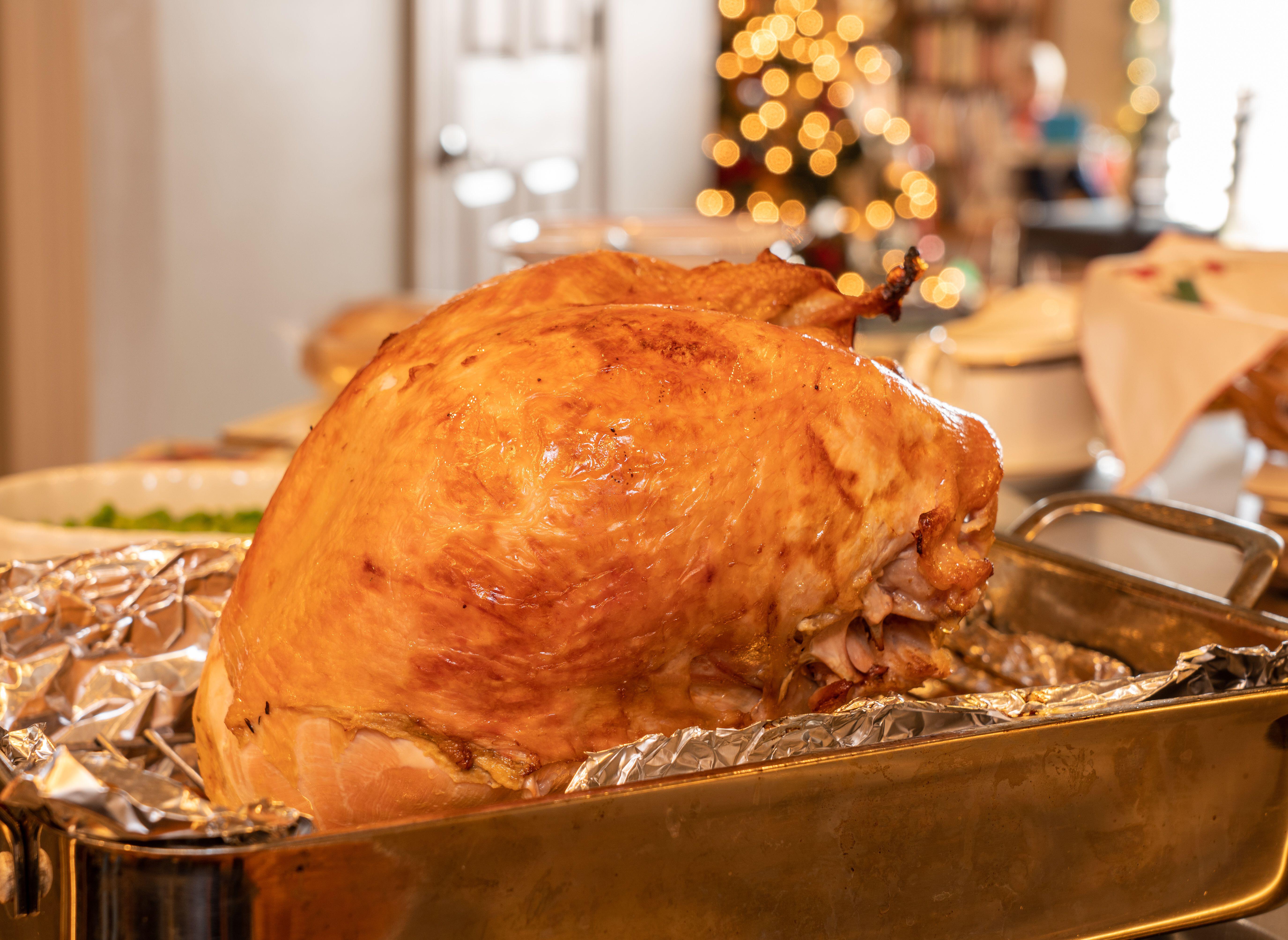How to roast the perfect Christmas turkey, according to top chefs
Avoid dry turkey disasters this Christmas with expert tips from leading chefs. From choosing the right bird and mastering the brine to basting, resting and carving, here’s everything you need to know to make your festive centrepiece juicy, tender and unforgettable

Your support helps us to tell the story
From reproductive rights to climate change to Big Tech, The Independent is on the ground when the story is developing. Whether it's investigating the financials of Elon Musk's pro-Trump PAC or producing our latest documentary, 'The A Word', which shines a light on the American women fighting for reproductive rights, we know how important it is to parse out the facts from the messaging.
At such a critical moment in US history, we need reporters on the ground. Your donation allows us to keep sending journalists to speak to both sides of the story.
The Independent is trusted by Americans across the entire political spectrum. And unlike many other quality news outlets, we choose not to lock Americans out of our reporting and analysis with paywalls. We believe quality journalism should be available to everyone, paid for by those who can afford it.
Your support makes all the difference.Few things are as synonymous with Christmas as turkey, year in year out. Yet many of us still haven’t quite mastered the art of a perfectly roasted bird.
Disappointing, slightly dry turkey is a feature on festive tables across the country. We might throw some cranberry sauce on there and call it delicious (because it would be rude to the cook not to) but what tricks are you missing to really make the meat juicy and delicious?
From shopping to cooking and carving, top chefs share their most important advice for getting that Christmas centrepiece right on the day.
Choosing the bird

Ben Palmer, BBC’s Great British Menu starter winner 2024, and chef at The Sardine Factory in Looe, says: “When looking for your turkey, always look at the size and the shape. You want to pick the roundest, most plump turkey that there is, as that means it will be the most tasty as it was a healthy bird. Don’t go for one that looks a little bit skinny, as it means it didn’t have a very good life and possibly wasn’t very healthy.
“Also, you do tend to get what you pay for – so if you afford to spend a little bit more on your turkey, then do it! Local producers from well-known farms, local reputable butchers and organic delivery services tend to be the best bet and worth the extra buck.”
Many of us are guilty of buying an enormous turkey for small family, vowing to eat it all as leftovers for days, but the cook will be easier for a smaller bird.
“Think about it sensibly,” says TV celebrity chef James Martin, whose latest book Cheese (Quadrille, £25) is available now. “You’re probably better off, if you’re only a family of six, just getting a turkey crown rather than the whole thing – that will reduce the cooking time down by half.”
You want to get the right size and have some left over for the next day, says Gaucho’s culinary director, Anthony Ekizian. “Usually, a small turkey is good enough for five or six people, a medium to large for over eight people. It needs to look plump and try to choose free-range. Bronze turkey is always better, if you can afford it.”
Preparing the turkey

Some chefs swear by brining the turkey before cooking it. Scottish chef, Dean Banks, a former BBC MasterChef finalist, says it helps create “the juiciest, most flavourful” turkey.
“Grab a large storage box. Fill it with water and 10% salt, then add festive spices like cinnamon sticks, cloves, bay leaves, and orange peel. Submerge the turkey, cover it with the lid, and leave it overnight in your garden,” he says. “This method seasons the meat all the way through, ensuring a tender and juicy bird.”
Dylan James, head chef at Cambium, at Careys Manor Hotel and SenSpa, agrees: “Brining the turkey is an excellent way to ensure the meat stays beautifully moist after cooking.
“The process also seasons the bird all the way through, so there’s no need for extra seasoning before roasting. For perfectly crispy skin, once the turkey has been brined, pat it dry, and leave it uncovered in the fridge overnight. This allows the skin to dry out, ensuring it crisps up wonderfully when roasted.”
But you don’t want to put the turkey straight from a cold fridge into a hot oven.
Theo Randall, chef patron at Theo Randall at the InterContinental, recommends: “Take out your turkey from the fridge at least an hour before you cook it. This will speed up the cooking and make the bird roast better.”
The cook

The major mistake many homecooks make is cooking the turkey whole, says Masterchef: The Professionals judge and chef Marcus Wareing, whose latest book Marcus’s France (HarperNonfiction, £22) is available now, says. “No matter how small or big, it will never be fully cooked in the leg and the thigh before the breast has dried out. The breast will always dry up, so you’re always going to be caught between a rock and a hard place.
He suggests: “Take the legs and the thighs off and get your butcher to bone them and roll them for you, and cook them separately. And just cook the breast on the crown [the white meat on the bone], or take them off the crown and cook them slowly.
“More than not, I think most people overcook their turkeys for the sake of making sure that the thighs are cooked.”
Martin adds: “It goes dry because its overcooked – fundamentally. Few of them need six hours – which I’ve seen people do before – I mean, it’s going to be ruined. Naturally, it’s a dry meat anyway.
“That’s why you better off buying a crown if you if you’re not cooking for big volume.”
Adding butter under the skin can help pack in the moisture in too.
“Make a self-basting flavoured butter,” suggests Palmer. “Add garlic, seasoning, lemon, thyme and sage to salted butter and give it all a great mix together and then smother the butter between the breast and the skin.
“You can lift up the skin at the cavity and use your fingers to separate the skin from the breast meat before smothering the butter across the breast and letting the skin resettle over the top. As the turkey cooks, all the butter will baste the crown gradually, making it beautifully moist and exceptionally tasty.”
Resting
Part of the stress of preparing the Christmas meal is trying to time everything so that your potatoes go crispy at the right time, while your gravy comes together and all of the many elements are still warm.
But when it comes to turkey, Martin suggests getting that out the way to free up oven space for your sides – giving it enough time to rest as well.
“Don’t be frightened to cook it in advance, get up in the morning, put it in the oven, take it out a good two hours before you need it.
“A lot of people panic and try to do everything at the last minute. And whenever you see a chef work, and we do in roast meats, we would never, ever take it out of the oven and put it straight onto the table. You need to leave it to rest for at least an hour. Leaving it to rest will generally cause it to be better, because you can put that moisture on it while it’s resting – you can keep basting it over the top.”
Removing the turkey from the oven with plenty of time to spare will also give you enough time to finish the rest of your sides.

“That gives the heat of the oven [time] to come back up to temperature to then do your roast potatoes and stuff like that,” says Martin. People try and cram everything in and [as] you’re putting more and more stuff in, the temperature is coming down, so it takes longer and longer to cook.”
Plus, the turkey resting time is “really, really important” for taste, says Wareing. “It just solidifies the natural juices of the turkey.
“My turkey sits, probably for an hour, because I need the pan for the gravy, I need the oven space. Never be afraid to rest, and don’t worry about having to serve it hot.”
Carving
Carving the turkey at the Christmas table is one of those key moments on the big day. But after all that time cooking, brining, basting and resting, try not to make a complete hash of serving it.
“Take the breast fully off the bone, don’t carve it on the bone, just take [a knife] right down the centre, take the whole breast off, and then just carve it into nice slices,” says Wareing. “You get a lovely slice. It’s all cut beautifully.
“I remember watching my dad do it. It was just a mess. There was so much meat left on [it].”
Join our commenting forum
Join thought-provoking conversations, follow other Independent readers and see their replies
0Comments